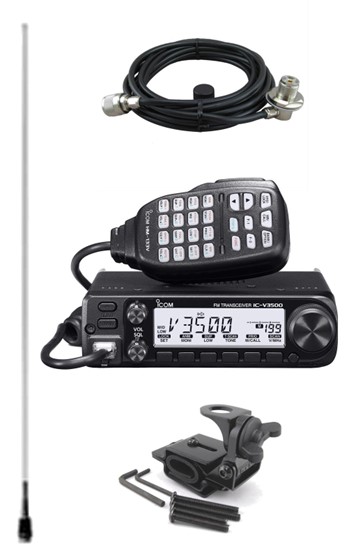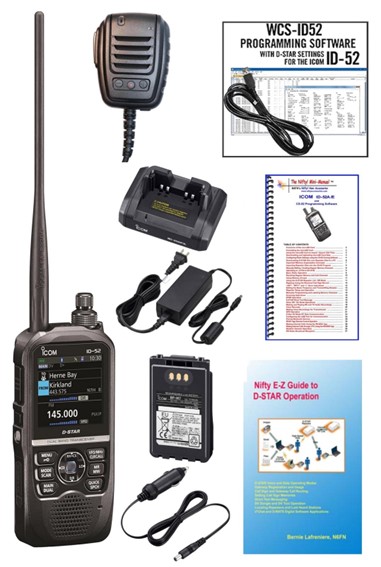Also, I want to activate a park. Is there a simple solution for putting together a POTA station?
Well done! Kudos! Huzzah! Congrats! Take a bow! You’ve studied hard and earned your amateur radio license. Welcome to a world of endless learning and fun.
As a Technician class license holder, you have been granted the privilege to enjoy many aspects of this versatile and fascinating hobby. Trust us, you’re in for a heck of a ride!
Read these OnAllBands articles about all the excitement your license provides:
- “Technician Class Licensees: Expand Your Operating Experiences”
- “Beyond Your Local Repeater: 15 Things to Do with a Technician License”
- “Guide to Contesting for Technicians”
Also, watch this video on how to start enjoying amateur radio after earning your license:
Upgrading to General and Extra Amateur classes will provide many more opportunities to fully explore being a ham, but a Tech license lets you get your feet wet in the hobby and have a lot of memorable experiences in the process. Read more about the operating privileges afforded by the three license classes here.
Like many new hams, you’re likely starting at square one in terms of having the equipment you’ll need to get on the air and put your license to use. Deciding what gear is best for your goals and budget can be daunting. Many hams narrow the possibilities by opting for a dual-band (VHF/UHF) handheld or mobile transceiver before investing in a radio that can handle the HF bands.
For valuable insights on purchasing a mobile or handheld transceiver, we recommend reading these OnAllBands articles:
- “So, You’re Ready to Buy Your First Handheld Transceiver. Now What?”
- “What to Look for in Your First Mobile Rig.”
Some people assume that since they’re acquiring their first transceiver, it’s best to go with the cheapest model they can find. Those who have been operating for decades will tell you this could lead to frustration right out of the gate.
Choose a proven model from a respected manufacturer that will deliver results that will get you excited about advancing in your amateur radio pursuits. The ham world is filled with stories of new licensees who bought their first transceiver based on price alone, only to find less-than-satisfactory results that doused their initial enthusiasm with a bucket of cold water.
Does that mean you need to purchase a top-end handheld or mobile radio with all the bells and whistles? No. You can purchase a high-quality and moderately priced rig that lets you do exactly what you want without all the extras. Another school of thought is to buy the higher-end radio and grow into it as you gain experience and your skills progress. This decision will depend on how much you’re willing to spend and your level of commitment as an operator.
What’s a Good Transceiver for Beginners in 2025?
The DX Engineering Facebook page asked its readers the above question. Since the question did not define “beginner,” many hams weighed in with opinions targeted at newer operators who had more extensive HF privileges as General license holders. As you might expect, there was no shortage of opinions. Here are just a few:
- “Spend as much as you can afford. The better the radio and setup, the more enhanced and enjoyable your first experiences will be. I’d buy new as well, just in case you get a second-hand duffer.”
- “First join a local club. Try out a few radios they have or ask around. See what people are using and having luck with. Also, see who might be an Elmer if you need help. Determine if you want to use it at home, in the car, or walking around. Then make your choice in a radio.”
- “Ask around for a used rig to own or borrow, then spend a lot of time figuring out how to set up a good antenna and spend a lot of time listening to the bands. Once you are proficient at using a radio and understanding how it works, then you will know best what to buy.”
- “For HF I would suggest the Yaesu FT-710 AESS or FIELD and for VHF/UHF/FM, the FTM-150RASP…for Digital, the FTM-510DRASP.”
- “Buy a good radio rather one you’ll outgrow quickly. The Icom IC-7300 is a good choice for HF.”
- “Yaesu FT-991A HF/VHF/UHF. All mode, all band. A great radio for Technicians.”
- “A newbie is a Tech with limited HF privileges, so I’d say a quality HT. I think the Icom ID-50A and ID-51/52s are worth the extra cost. But also an Icom ID-5100 is full duplex and pretty awesome.”
- “For HF, I’d recommend an older rig with dials and not menus where possible. That lets you get a ‘feel’ for the radio and the incoming signal.”
- “Just dive in headfirst. Go with a Flex radio.”
All-in-One Packages
This leads us back to the question, “What’s an easy way to get on the air?” Amateur radio handheld and mobile “Getting Started” packages, which come with a transceiver and compatible equipment, take the guesswork out of building a station that will let you make your first QSOs. Providers like DX Engineering offer a range of these affordable kits for newly licensed hams, including mobile transceiver packages with radio, antenna, and antenna mount; and handheld transceiver packages with transceiver; speaker mic; programming software and cable; and upgraded antenna.

If you want a starter package that includes a handheld with greater functionality, DX Engineering offers two high-end getting started handheld kits. Choose from the VHF/UHF Icom ID-52A or Yaesu FT-5DR packages. Both come with speaker microphone, programming software and cable, chargers, battery pack, and reference guide.

POTA Made Simple
For operators who are looking for an easy way to participate in Parks On The Air® (POTA) or other outdoor activations, DX Engineering offers three POTA kits which include either Yaesu FT-891, Icom IC-705, or Icom IC-7300 transceivers and other gear (portable antenna, solar panel, and more).
Find all DX Engineering Getting Started Packages at DXEngineering.com.

